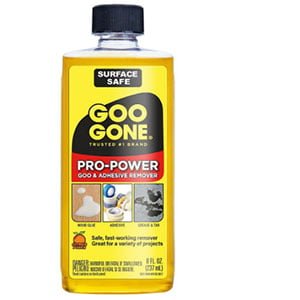@Hello Below , I wasn't going to go there, but yes, you're absolutely right. The only thing that sticks to silicone is silicone.
I didn't want to mention it as I could just hear the armchair chemists lining up to shoot this all to hell.
Nothing sticks to silicone and nobody should stick no silicone on their boat  .
. If you own a 1990+ production boat, the frameless window installations are 100% silicone. And what's DC 795

?
Back in 2007, I was looking at frameless window repair and thought I'd go right to the horse's mouth. In return, I got this e-mail from Dow Corning regarding applying new DC795 over old DC795 :
________________________________________________________________________________
Dear Ralph,
This is a follow-up message from Dow Corning to your recent inquiry. Yes, 795 will adhere to old 795 as long as the old cured 795 is clean, dry, and frost free. Below I have provided information that discusses the removal and replacement of cured silicone sealant and our recommendations.
Removal and Replacement of Cured Silicone Sealant
A properly designed and installed silicone joint will typically last 20 years without need of replacement. In instances where the joint has experienced mechanical or other damage and replacement is required, follow the procedures below. Assess the problem with the joint.
1. If the sealant is cured properly and performing application but its appearance is poor (i.e., due to improper tooling), then cleaning the sealant surface with a solvent and recapping the joint should be sufficient.
a) Clean sealant with a solvent (i.e., xylene, toluene) to remove dirt. Allow solvent to evaporate.
b) Remask the joint.
c) Apply a thin bead of fresh sealant over the cured sealant.
d) Dry tool the sealant.
e) Remove the masking material.
2. If the sealant is mechanically damaged and a recapping will not improve the joint appearance, then remove the section of old sealant and replace it.
a) Cut away the old sealant. If excellent adhesion to the substrate is still maintained, then leave some sealant at the edges of the joint (up to 0.08"/2 mm thick).
b) If adhesion to the substrate is poor, then remove sealant down to the substrate and clean the substrate and recondition if necessary (i.e., clean with xylene and prime with appropriate primer).
c) Mask the joint.
d) Reapply the sealant. (If resealing does not occur on the same day, the joint will have to be recleaned using a solvent such as xylene or toluene before applying the fresh sealant.)
e) Dry tool the joint.
f) Remove the masking material.
g) Check adhesion after the sealant has cured for 7 days.
Thank you for contacting Dow Corning. If I can be of further assistance, feel free to contact me.
Best Regards,
Mary
DOWCORNING.COM | CONTACT AN EXPERT | FIND A DISTRIBUTOR | CUSTOMER SUPPORT | SUBSCRIBE
Mary Altenburg
Technical Information Center
Dow Corning Corporation
We help you invent the future ™
Phone: (989) 496-6000 Fax: (989) 794-5900
Email: tech.info@dowcorning.com
NOTICE: (Please Read Carefully):
Dow Corning believes that any product use recommendation or product information presented is an accurate description of the typical characteristics or uses of the product, but it is your responsibility to thoroughly test the product in your specific application to determine its performance, efficacy, and safety under your conditions of use. Suggestions of uses should not be taken as inducements to infringe any patent. Unless Dow Corning provides you with a specific written warranty of fitness for a particular use, Dow Corning's sole warranty is that the product as supplied will meet Dow Corning's then current sales specifications. DOW CORNING SPECIFICALLY DISCLAIMS ANY OTHER EXPRESS OR IMPLIED WARRANTY, INCLUDING THE WARRANTIES OF MERCHANTABILITY AND OF FITNESS FOR PARTICULAR PURPOSE. Your exclusive remedy and Dow Corning's sole liability for breach of warranty is limited to refund of the purchase price or replacement of any product shown to be other than as warranted, and Dow Corning expressly disclaims any liability for incidental and consequential damages.
Good News!! Many Dow Corning technical data sheets as well as Material Safety Data Sheets (MSDS) are now available online! Just visit our site: www.dowcorning.com
You may search under the product name or number, product family or industry. Some of this information is also available in several languages - just choose which country and language you want.
_____________________________________________________
Being from Missouri, I had to try it to satisfy myself and yes, the joint is just as strong as the parent material. As you have stated, I would agree that only like silicone to like silicone would be a good idea.
There's still the matter of building up the PlasDECK to the thickness of the old plywood which takes us back to where we started.
So many options, so little time
 .
.





 .
.